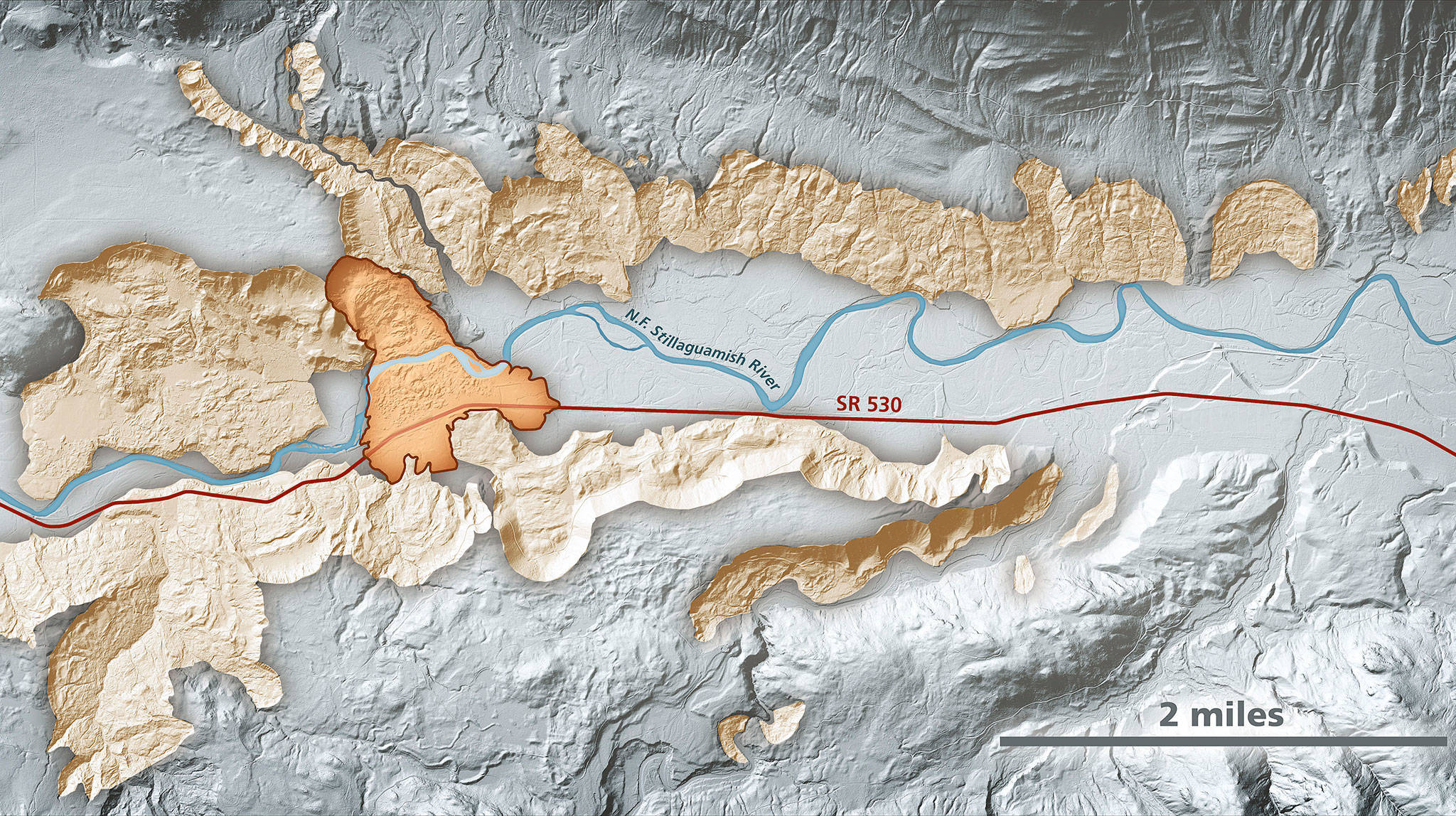OSO — A new national program will increase 3D mapping of landslide risks to anticipate disasters like the deadly Oso mudslide that struck nearly seven years ago.
Legislation passed by Congress Dec. 16 dramatically increases the use of a laser-surveying technology known as Lidar to map, identify and track potential landslide areas. Lidar stands for Light Detection and Ranging.
Congresswoman Suzan DelBene, whose district includes Oso, and Washington Sen. Maria Cantwell introduced the bill.
“Employing our best science and mapping technologies will help communities across our state save lives, safeguard property, and improve our emergency planning and response,” Cantwell said in a statement.
Passage of the bill marks a shift in the U.S. government’s consideration of landslides as a secondary risk to earthquakes, floods and volcano eruptions.
Currently, “Landslides are sort of dealt with as an after-effect of other natural disasters,” said Nick Martin, a spokesperson for DelBene.
Now, the U.S. Geological Survey will treat landslides as a primary natural disaster.
The new bill gives the survey funding to form a program specifically for landslides, with its own dedicated staff.
They’ll get $40 million annually for a 3D mapping program, but that money is spread throughout the whole nation.
As it is, state governments, local communities and tribes are responsible for initiating any mapping. The new federal program will centralize that data collection.
“With programs like this, communities across the country will be able to understand where you could see shifts in the ground and be able to better predict where ground has a greater likelihood of a slide,” Martin said.
The federal program will complement efforts by Washington’s Department of Natural Resources and counterpart agencies in other states.
DNR has made progress mapping and analyzing data about the glacially formed landscape in the upper half of the state, including Snohomish County. The work relies heavily on aerial maps created using lidar.
Each year, landslides kill 25 to 50 people and cause between $1.6 billion and $3.2 billion in damage in the United States.
The 2014 Oso mudslide near Darrington, a catastrophe that destroyed 49 homes and took 43 lives, along with a recent landslide in Haines, Alaska, played a large role in pushing the legislation’s passage.
DelBene first introduced the bill in 2016, and has reintroduced it every session since.
“The legislation that Representative DelBene has brought forward may not prevent another Oso slide,” Darrington Mayor Dan Rankin said. “But it gives communities like Darrington data that we can use to make important decisions about land use in hazard areas, training for our emergency services, and redundancy in infrastructure so precious time is not lost in a time of need.”
Julia-Grace Sanders: 425-339-3439; jgsanders@heraldnet.com; Twitter: @sanders_julia.
Talk to us
> Give us your news tips.
> Send us a letter to the editor.
> More Herald contact information.

























